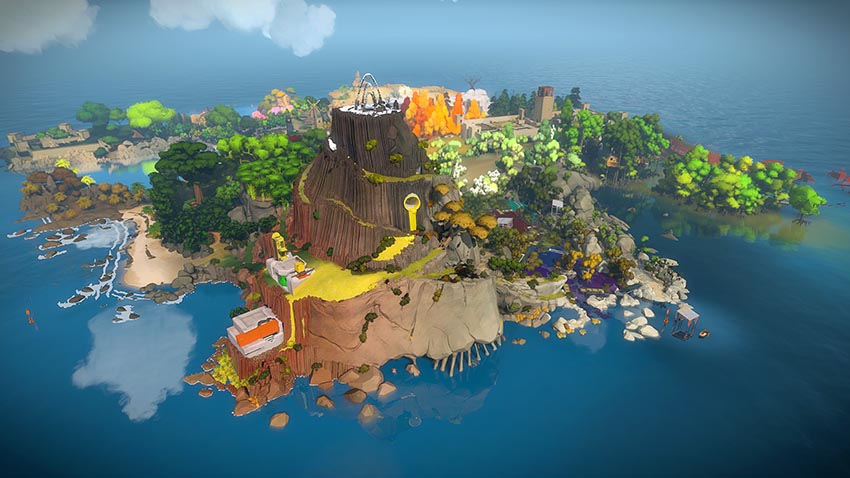The answer to life’s greatest puzzles are often in plain sight, but people are too distracted to witness them. “The Witness” reminds this to players by forcing them to tackle the game with critical thinking and open-mindedness — challenging players rather than babying them.
Developer Jonathan Blow’s latest title, released Jan. 26, is a foil to the trend in gaming of creating games with reliable returns to investment by appealing to large audiences. “The Witness” isn’t exclusionary, but it is made with dedicated players in mind and would bore those who would prefer instant gratification.
Different from the mainstream, “The Witness” feels like an homage to older games that didn’t hold the players’ hands. Instead of instructing players through long tutorial sequences, the title actively seeks to use interactivity and cognitive thinking to engage the player and teach them the game’s mechanics.
The game takes place on a lonely island, populated by little more than labyrinth puzzles of varying complexity. At first, the puzzles simply require the player to guide a line through a maze, going from point A to point B. They rapidly expand by introducing new arbitrary symbols that require logical thinking to decipher.
These labyrinths are more than puzzles; they are a medium in which rules, concepts and subtleties are inscribed into the player’s mind. Rather than blurting out the instructions to a puzzle mechanic and then having the player solve increasingly harder puzzles with that rule set, the game requires players to figure out mechanics without instruction — using only their mental capacity to imagine and comprehend.
In doing so, “The Witness” respects the player by assuming that he or she has the capacity to grow and understand the new world around them.
Players will find no pop-up boxes explaining how to solve puzzles but will be taught organically through intuitive design that progressively teaches the player. One of the game’s lessons is to step back, as one of the first puzzles introduced is unsolvable until the player understands the island better.
The island itself is an interactive painting of a colorful, pastel world focusing on artistic vision that enhances the tone of the game in a way that realist visuals couldn’t. The theme park of distinct and mysterious locales drives the player to uncover the island and its secret.
The story’s progression gets a little strange as “The Witness” lacks a more traditional storyline. Audio logs, which feature quotes from scientists and philosophers, seem to drive the narrative. While these quotes could be seen as tangential to the game, they often serve as a compliment to its theme — embracing new perspectives. The logs often offer reflection on the game’s puzzles, but also seem to be there to speak to the player himself and offer a mental form of personal reflection.
As far as puzzle games go, “The Witness” is one of the most rewarding games for players willing to confront a distinct experience that truly seeks to expand the limitations of video games as a medium. “The Witness” strives to be a piece of art and manages to do so successfully.















